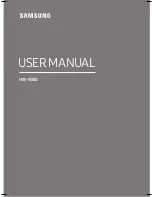
48
Example #2:
The clock gains an average of 11 seconds per day. Solution: Program the panel to adjust the clock by 71 seconds (instead of the default 60 sec-
onds) for the last minute of each day in section [700]. This will slow down the panel’s clock by 11 seconds, correcting the problem.
NOTE:
If the Auto-arm time is set for 23:59, any change to the Clock Adjust option will directly affect the Auto-arm pre-alert time.
[701] - First International Option Codes
[702] - Second International Option Codes
Option
International Code
ON/OFF
Description
1
AC
ON
50 Hz AC
The incoming AC power cycles at 50 Hz.
OFF
60 Hz AC
This is the North American standard where the incoming AC power cycles at 60 Hz.
2
Time Base
ON
The timebase is the internal crystal oscillator.
In cases of unstable AC power input, the internal
crystal can be used to keep the most accurate timebase.
OFF
The timebase is the AC power input.
The 50 or 60 Hz AC power input is normally very stable
and can be used as the timebase
3
Arming Inhibit
ON
AC/DC Arming Inhibit with Battery Check Enabled.
When an AC or DC trouble is present, the
system will not arm. This includes Keypad, Keyswitch, Automatic, and Downloading Arming. If
enabled and arming is attempted, the system will perform a System Battery check as well as a Bat-
tery Check on all peripheral modules supported by a backup battery.
OFF
Arming not Inhibited
. The system can be armed, regardless of the presence of an AC or DC trou-
ble and will not check all system batteries upon arming.
NOTE: If this option is enabled, it is strongly recommended that AC Troubles be displayed
(Section [017], Option 1 ON).
4
Latching System Tamper
ON
System Tampers Require Installer Reset and Inhibit Arming.
If any system tamper condition
occurs, the Installer’s code must be entered. [*][8] [Installer Code] and the tamper condition must be
restored before the system can be armed. This also includes auto-arming and keyswitch. If auto-
arming is attempted with a latched tamper, the panel will not arm. The Auto- arm Cancellation
code is not transmitted however because a user did not cancel the auto-arming sequence.
OFF
System Tampers Do Not Require Installer Reset.
If any system tamper condition occurs, an
Installer Reset is not required.
NOTE: If enabled, the manual bypassing of a zone will not bypass the tamper or fault
states (DEOL). This feature also applies to Zone Faults.
5
Access Code Length
ON
6-digit Access Codes
. All access codes on the system will be 6 digits in length except the Panel I.D.
Code and the Downloading Access Code.
• System Master Code = XXXX56 XXXX = previous code, (1234)
• Installer Code = YYYY55 YYYY = previous code, (5555)
OFF
4-digit Access Codes
. All access codes on the system will be 4 digits in length. For any existing
codes, the last 2 digits are removed.
6
Busy Tone
ON
Busy Tone Detection Enabled.
If these tones are detected, the communicator will disengage the
phone line and try to place the call again following the “Delay Between Dialing Attempts”
OFF
Busy Tone Detection Disabled.
The communicator will use the standard dialing procedure for
every attempt.
7
Battery Current Charge
ON
High Current Battery Charge.
The battery connected the control panel will be charged with a
charge current of approximately 700 mA.
OFF
Standard Current Battery Charge.
The battery connected to the control panel will be charged
with a charge current of approximately 400 mA (280mA for IMQ).
8
Communication Priority
ON
Alarm type Events are Priority
Alarm Type Events (Zone Alarms, [F] Key Alarm, [A] Key Alarm, [P]
Key Alarm, Duress Alarm, Zone Expander Supervisory Alarm, Two Wire Smoke Alarm) will terminate
a DLS, Remote Escort, Listen-in or a Downlook Session.
OFF
All Except Test type Events are Priority
All events except Periodic Test Transmission, Periodic Test
with Trouble, and System Test are considered priority events. Priority events will terminate a DLS,
Remote Escort, Listen-in or a Downlook Session.
Option
International Code
On/Off
Description
1
Pulse Dial
ON
33/67
Pulse Dialing Make/Break Ratio is 33/67
OFF
40/60
Pulse Dialing Make/Break Ratio is 40/60
2
Force Dial
ON
Force Dialing Enabled
If the first attempt by the panel to call the monitoring station fails to detect
a dialtone, on every subsequent attempt the panel will dial regardless of the presence of dialtone.
See [703] Delay Between Dialing Attempts.
OFF
Force Dialing Disabled
The panel will not dial the programmed telephone number if dial tone is
not present.
3
Land Line Test Transmission
ON
Land Line Test Transmission Interval is in Minutes
The value programmed in Section [370] Sev-
enth entry is in Minutes.
OFF
Land Line Test Transmission Interval is in Days
The value programmed in Section [370] Seventh
entry is in Days.
4
Handshake
ON
1600 Hz Handshake
The communicator responds to a 1600 Hz handshake for BPS formats.
OFF
Standard Handshake
The communicator responds to the handshake designated by the format
selected (1400 or 2300 Hz).
5
I.D. Tone
ON
I.D. Tone Enabled
After the telephone number is dialed, the panel will emit a tone (as specified by
Option 6) for 500 ms every two seconds to indicate that it is a digital equipment call, not voice.
OFF
I.D. Tone Disabled
After the telephone number is dialed, the panel will not emit an I.D. Tone
6
I.D. Tone Frequency
ON
2100 Hz I.D. Tone
After the telephone number is dialed, the panel will emit a 2100Hz I.D. Tone.
Enable I.D. Tone (Section [702], Option 5).
OFF
1300 Hz I.D. Tone
After the telephone number is dialed, the panel will emit a 1300Hz I.D. Tone.
Enable I.D. Tone (Section [702], Option 5).
















































